N/A
New York Rangers
Rangers' Core Is Rotting Away and Trading Veterans Might Be the Only Solution
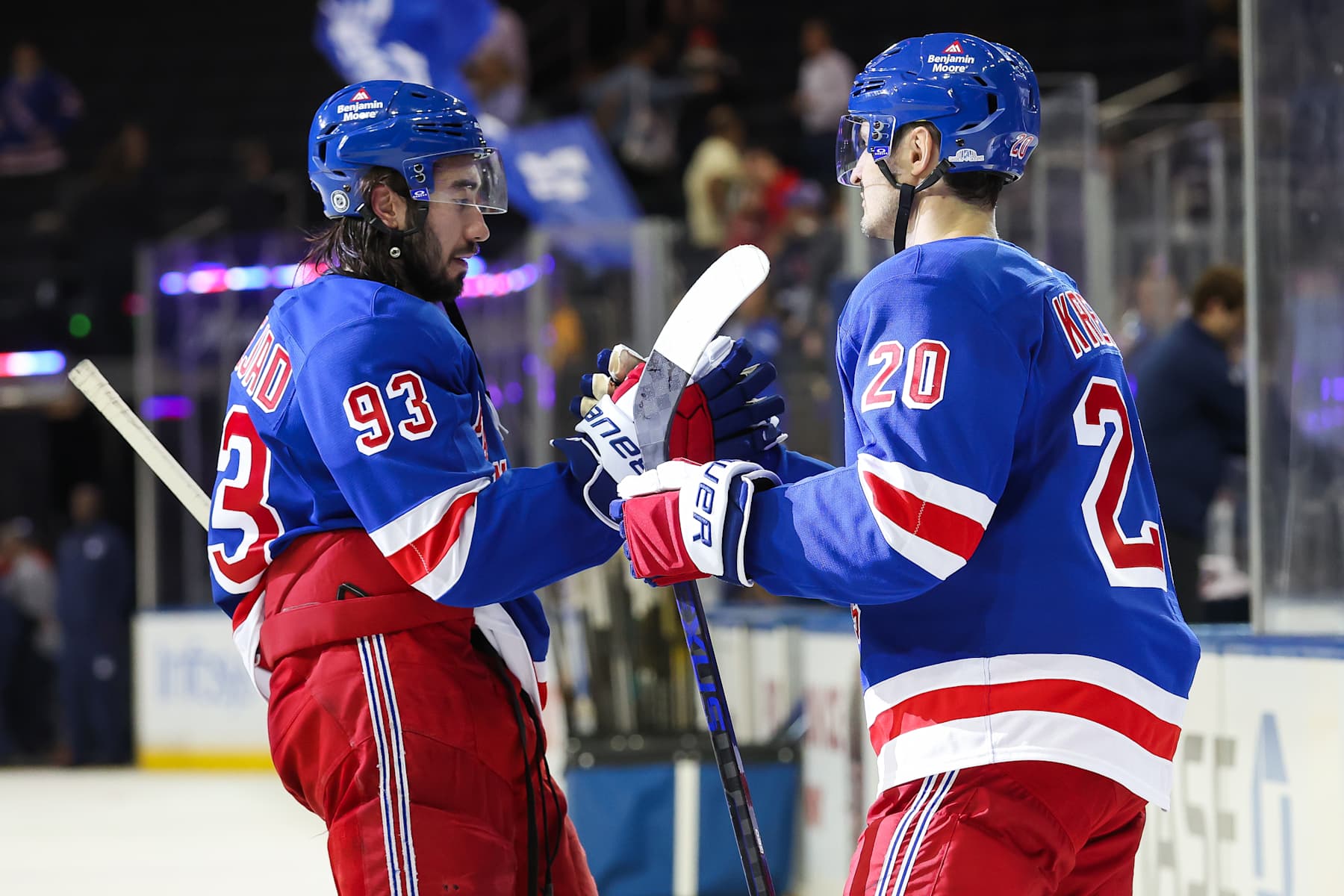
The Big Apple's core appears to be rotting.
In certain ways, this Rangers season is business as usual. They're comfortably in playoff position and on pace for 102.5 points. Generally lackluster performances are bailed out by elite goaltending, special teams play, and individuals carrying the rest of the group. The prescription in previous seasons was to grin and bear it until the trade deadline.
This time around feels different. The Rangers' 12 wins represent almost exclusively the beating up of terrible teams. Against more formidable opponents—Winnipeg, Florida, Washington—they were formidably outclassed.
Most alarming is that veteran players, who are supposed to lead the team both in their play and attitudes are, at best, struggling to find their games and, at worst, looking indifferent to the cause at hand. This is not a flawed but committed team looking to work out the kinks. This is a group that seems content to sleepwalk to the playoffs.
The team's management and coaching staff, in contrast, seem to see an urgent need for change. The team called up Brett Berard and Matt Rempe, two energetic players, from the AHL for Monday's game against St. Louis. The bigger news was a not-so-subtle leak indicating that the Rangers are looking to change the mix.
Chris Kreider's inclusion is stunning. The 33-year-old has been a tether to stability in New York throughout multiple eras of turnover. Never before has his performance been questioned so far as to evoke trade speculation.
He scored 39 goals last season but struggled at five-on-five; a trend that has escalated this season. Kreider has two points in 19 games at even strength.
Mika Zibanejad, who centers Kreider's line, has been worse. He too is barely generating offense at five-on-five and his 200-foot game is MIA. Zibanejad does not appear engaged in the details, losing puck battles without much fight and making soft turnovers. He's clearly battling the mental side of the game. One has to worry if he's also losing his legs. Zibanejad, who historically creates offense off the rush, has seen a sharp decline in both his peak speed and his 20+ MPH skating bursts over the last two seasons. If the Rangers could even find a taker for his $8.5 million cap hit through 2029, he could block it with his full no-move clause. This could be a problem for the summer.
Which brings the discussion back to Kreider. He showed more signs of life last season and his $6.5M cap hit through 2027 is far more manageable. Teams yearn for players with his size, speed, and experience. He can only block trades to 15 of the 31 other NHL teams. Perhaps Kreider is name-dropped only to make the locker room less comfortable, but if the Rangers are truly intent on shaking it up, they have to work with the players other teams might actually want.
Jacob Trouba is a less surprising addition to the discourse. The Rangers attempted to move him during the summer before he blocked it. His play has not matched his $8M cap hit at any point during his Rangers career, but he's taken a dramatic step back the last few seasons. The team bleeds chances when he's on the ice, and he has no goals and six points through 20 games. If this newest trade rumor was supposed to ignite a fire under him, it did not work. He was the team's worst defenseman against St. Louis on Monday.
Ryan Lindgren also continues a trend of players who do not look the same for a second straight season. One has to wonder if his propensity for putting his body on the line every game has taken its toll even at age 26.
He also does not look like a fit for the team's systems. Under the previous coaching staff, which kept things very simple, conceded possession, and emphasized keeping play to the perimeter in the defensive zone, Lindgren was better off. Head coach Pete Laviolette demands his defensemen be more engaged in all three zones and stand up at the blue line. It's not working with Lindgren.
Lindgren signed a one-year deal for $4.5 million last summer and seems increasingly likely to leave as a free agent next July. Maybe the Rangers decide to expedite the process with a winter trade.
For better or worse, Drury has left the Rangers' roster surprisingly untouched from when he first inherited it in 2021. In recent years, the only real extractions have been nibbles around the edges. Ryan Strome was swapped out for Vincent Trocheck in 2022 and depth forward Barclay Goodrow was waived to San Jose last summer.
Over the last few seasons, Drury has patiently let this core group of players try to make it work. To the extent he has ever changed anything, it was almost always to add to the group and try to fill the weak spots.
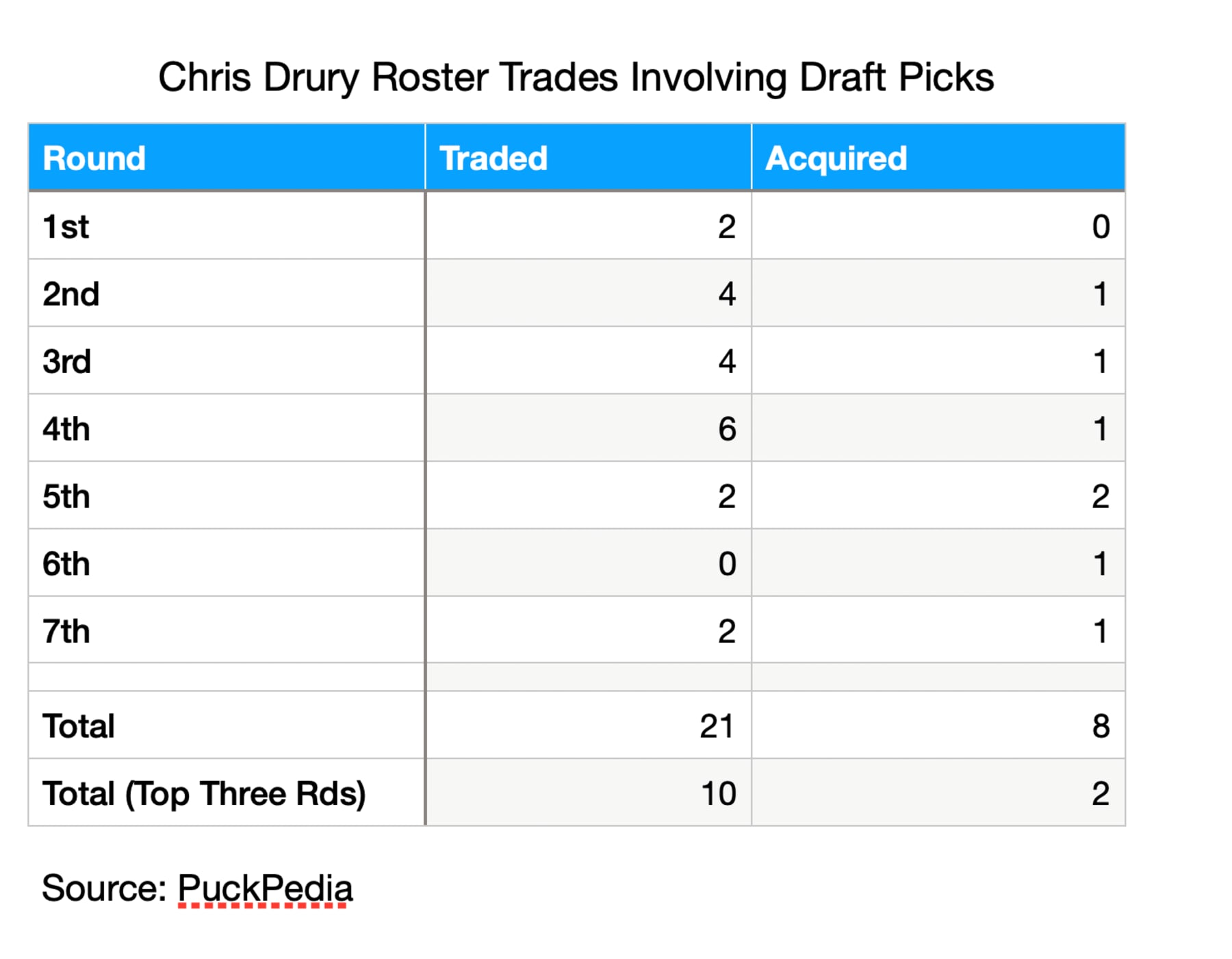
One can debate certain trades or roster decisions, but the core group of players in New York cannot claim that Rangers management has not exhausted available avenues to try to make it work for them. For four offseasons, the group was left mostly untouched and usually reinforced with heavy investment for playoff runs. The only heads to ever roll were those of the coaches.
Has that built a culture of complacency? A core of players who take for granted that their place in New York is safe? A group of veteran leaders who are content to shuffle the responsibility of answering for these struggles to younger players? It's hard to know from the outside.
It sure seems that, inside, Rangers brass feels that the team's mainstays need to feel more insecure about their futures in New York. Maybe loud announcement of trade explorations first serves as a scare tactic.
The surest way the players can nip these discussions is by playing capable hockey in the next few weeks. But it would be a mistake to think Drury is making empty threats. This roster is long overdue for seismic turnover, and they won't have the chance to coast into the summer before it occurs.
NHL Rumors: Rangers Trades Linked to Chris Kreider, Jacob Trouba for Roster Shake-Up

The New York Rangers "have made it very clear they are interested in making moves and shaking up their roster," according to Sportsnet's Elliotte Friedman.
Friedman cited left winger Chris Kreider and defenseman Jacob Trouba as players who could be on the way out.
New York is fourth in the Metropolitan Division with 25 points through 19 games. The team does at least occupy the first wild-card spot in the Eastern Conference.
But claiming a wild-card berth would be a disappointing outcome for a franchise coming off a record points haul (114) and a second Eastern Conference Final appearance in three seasons. Friedman's report points to the sense of urgency the front office is feeling right now.
Unloading Kreider in particular would be a divisive decision in the Big Apple. The 33-year-old has spent his entire career with the Rangers. He's 10th all time in appearances (834) and third in goals (313).
Kreider's production this year (nine goals and zero assists) leaves a lot to be desired, though, and he's due to count for $6.5 million annually for the next two years. Leaving sentiment aside, trading him for the right offer makes sense.
With his $8 million salary for 2025-26, Trouba makes sense as another outgoing trade chip. Whether he actually gets moved is another matter considering the Rangers went down this road in the offseason and didn't have any takers.
The Rangers could clearly use some reinforcements because they have some glaring holes on the roster. Chris Drury may have a hard time upgrading the roster in a meaningful way, however, when aging vets such as Kreider and Trouba could have a limited market and the front office has already sacrificed so many young players and draft picks to assemble this roster.
Why Rangers' Extension for Alexis Lafreniére Will Pay Off in the Long Run
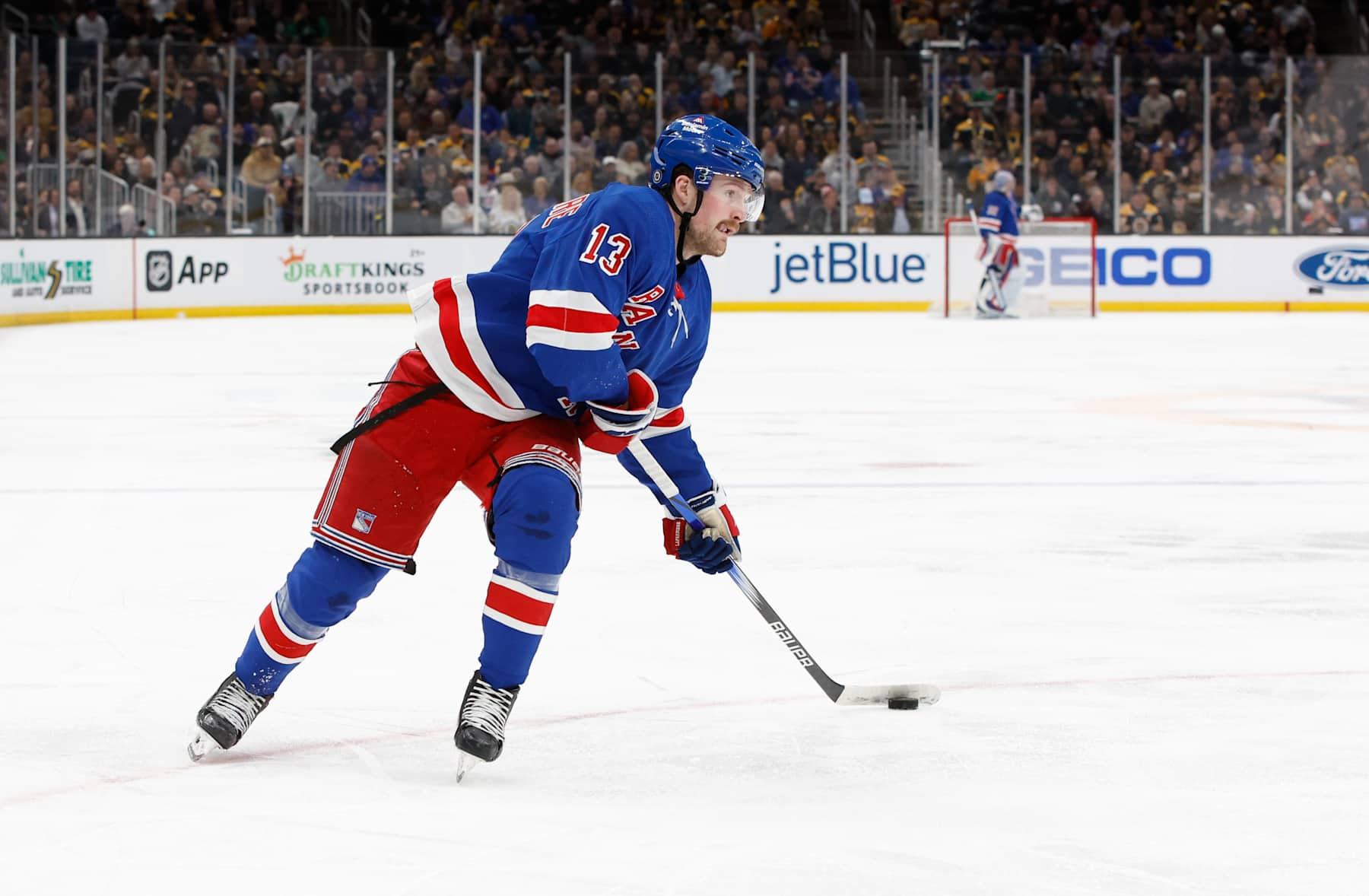
Alexis Lafreniére's seven-year contract extension with the Rangers is, from a bird's-eye view, business as usual. That's usually how these things go for former No. 1 overall picks, especially those who were the runaway consensus player in their draft year like the Quebec-born winger was. The player enters the NHL around 18 years old, and eventually, his drafting team eagerly locks him up to a long-term contract at some point in his early 20s.
However, the path to this moment was not so customary. Lafreniére's first few seasons in the NHL were objectively disappointing. He showed moments of excellence but struggled to establish himself as a consistent offensive presence, finding himself in the bottom six or even the press box far more often than on a scoring line.
Whereas most top picks are immediately locked up the second their entry-level contract expires, Lafreniére obtained a two-year bridge deal for less than $2.5 million annually—a reflection of his underwhelming output and a future in New York that wasn't necessarily guaranteed.
Even Lafreniére's breakout season in 2023-24—in which he totaled 57 points—doesn't immediately match up with his new contract. Yet by evaluations both statistical and visual, few people doubt the Rangers' decision to hand the 23-year-old a blockbuster contract.
Here's a look at how Lafreniére found his game in New York, why he will undoubtedly justify the contract, and what the salary-cap implications are for the Rangers.
Contextualizing Lafreniére's First NHL Seasons
The circumstances under which Lafreniére joined the Rangers are truly unique. The COVID pandemic that prematurely ended the 2019-20 NHL regular season and forced an unprecedented round of play-in series created a bizarre scenario in which the NHL held multiple draft lotteries. In short, the Rangers won the Draft Lottery with 3 percent odds.
An unorthodox situation made for an unorthodox start to Lafreniére's career. The No. 1 overall pick typically goes to a team that is bad and embarking on a rebuild. That means a lot of opportunities to play a lot of minutes in a low-stakes environment. What's more, Lafreniére was joining a roster that already had Artemi Panarin, Chris Kreider, and Pavel Buchnevich on the wings. Good luck beating that trio out for ice time as a teenager.
A third-line checking role forced Lafreniére to play a style antithetical to his skillset. He also did not receive an ideal amount of ice time for his development. A mismatch with head coaches David Quinn and Gerard Gallant did not help matters. Gallant, who philosophically prefers veteran players, kept Lafreniére in the bottom six by arguing that the winger was not comfortable on the right wing and that his job was winning rather than development.
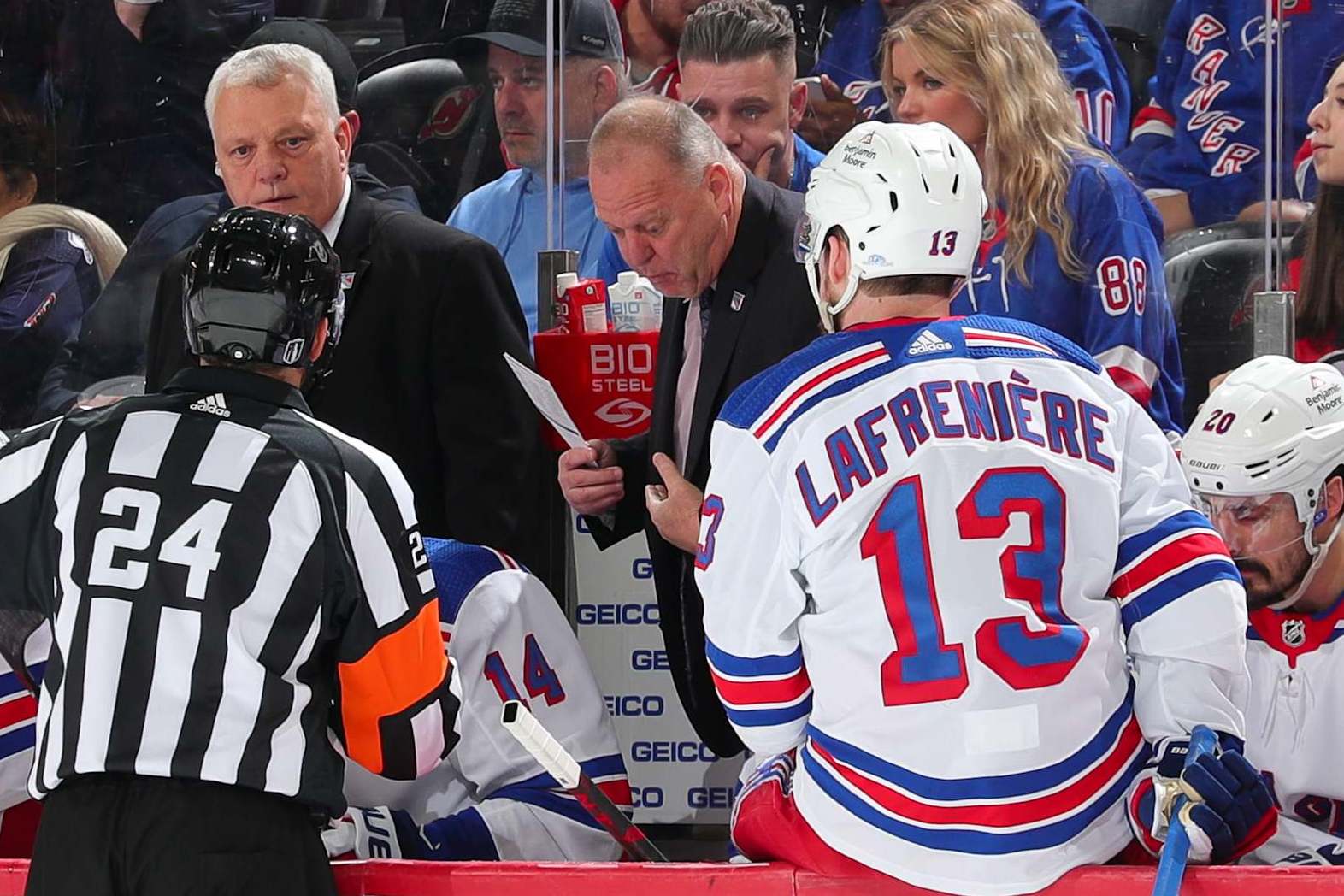
Lafreniére isn't without blame for his early struggles, but he wasn't put in a position to succeed.
Despite that, there were signs that Lafreniére was primed to eventually break out. In his first three NHL seasons, the skilled winger ranked second on the team in even-strength goals. He ranked 61st in the entire NHL over that span, despite limited ice time. There was a credible argument that he would thrive in a consistent role on a scoring line.
Finding His Groove
The Rangers replaced Gallant with Peter Laviolette for the 2023-24 season. The team benefitted as a whole, but no player benefitted more than Lafreniére. Laviolette did move him to the right wing permanently and stuck him on a line with Artemi Panarin and Vincent Trocheck—an unabashed scoring line that would play a lot of minutes.
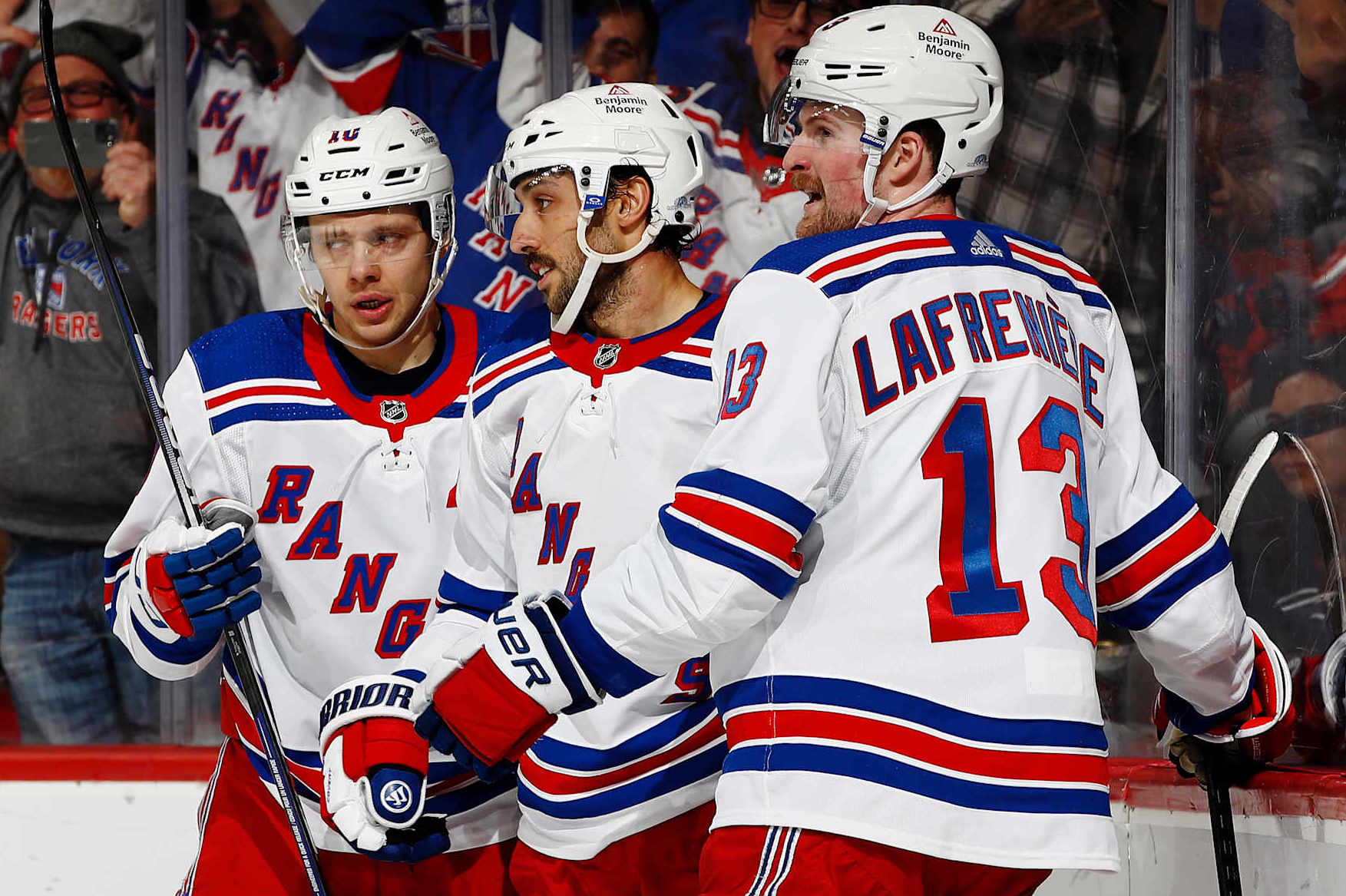
The line was one of the most dominant in the NHL last season, both by expected goals and actual goal output, with those trends continuing this season. Over the two seasons, Lafreniére ranks 18th in the NHL in both goals and points at five-on-five.
What makes the trio so effective is their exploitation of east-west movements. Moving the puck across the slot to the weak side and forcing the goaltender to move is the most consistently effective way to create goals. Because teams protect the middle lane, it is difficult to carry the puck or thread passes through such a defensive presence. But it's exactly the type of play that Lafreniére excels at, and Panarin is truly elite in this dynamic.
Plus, against Gallant's best judgment, playing Lafreniére on the right wing makes him all the more effective. As a left-handed shot, Lafreniére is ideally suited to receive pucks across the slot while already in a shooting posture. Or, he can carry the puck from his off-wing across the slot and immediately shoot. It's the preferable setup for a player of his abilities to make the most of his skill and generate—and finish—scoring chances.
As a pure offensive generator, this line has bad moments defensively, with Lafreniére culpable. It's not what you want, but there is beauty in that imperfection. The Rangers' coaching staff is maximizing his strengths rather than worrying about his weaknesses. Yes, Lafreniére (and his linemates) will cost the team some goals, but they will score far more. He can mitigate the problems as he continues to develop, but Laviolette is ultimately letting Lafreniére spread his wings and take risks.
What's Next for Lafreniére and the Rangers
For Lafreniére to live up to the contract, he'll need to produce more offense. As demonstrated, he's already doing so at a high level at five-on-five. The next obvious step is for him to get a prominent power-play role. There's no doubting his ability to do so, but he remains stuck in a depth chart quagmire. The Rangers' top power-play unit has been among the best in the NHL the last few seasons, and there are no obvious players to remove. His chance will come eventually, but he will have to wait.
Meanwhile, the hefty investment in Lafreniére means the Rangers are now tight for cap space for the next two seasons with other key players to lock up, chiefly Igor Shesterkin.
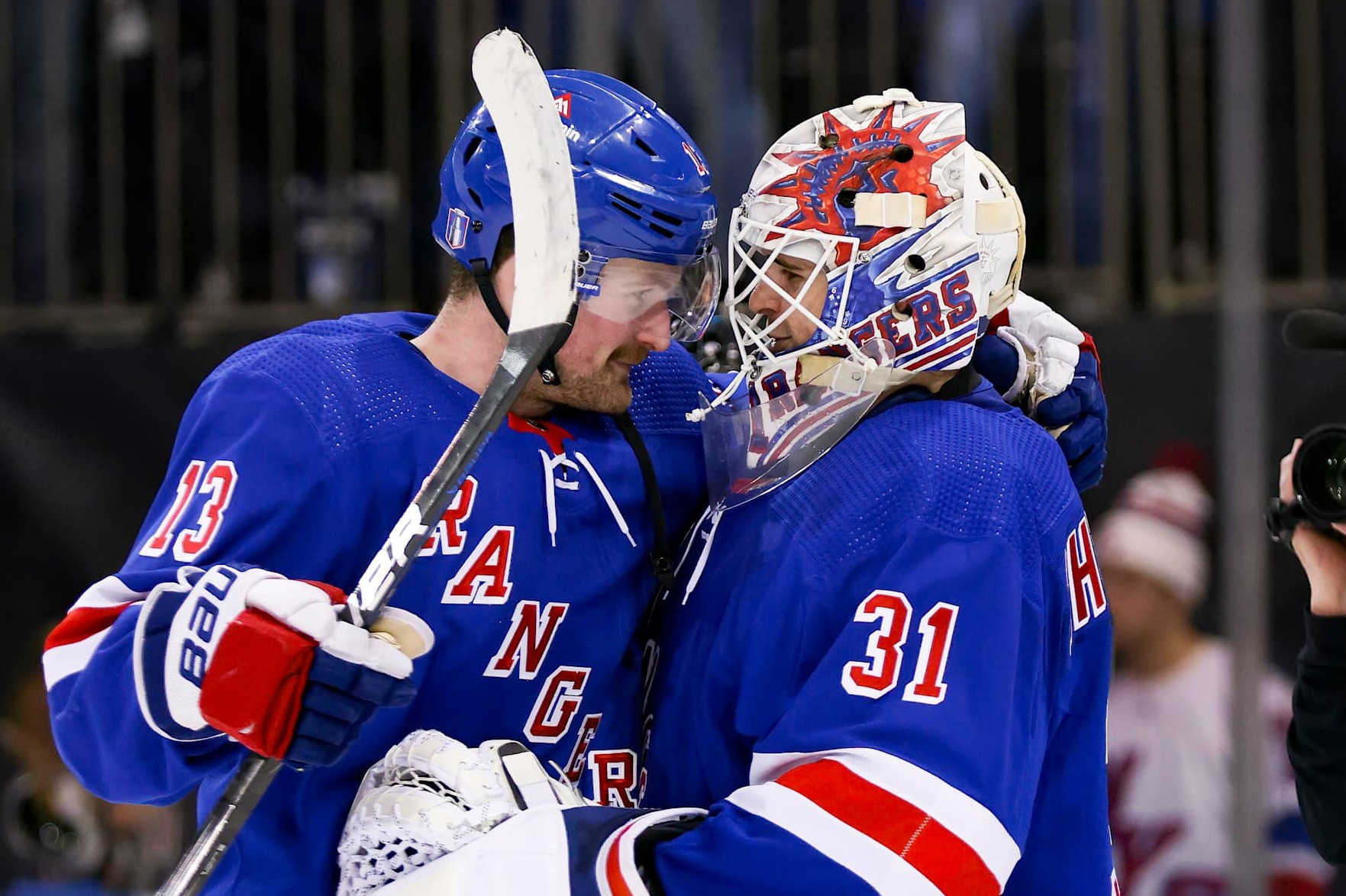
The roster is also somewhat imbalanced with Lafreniére, Panarin, and Kreider. The Rangers attribute a combined $25.6 million cap hit to three wingers next season, according to Puckpedia.
The Rangers signed Lafreniére through his prime years. Panarin and Kreider come off the books in 2026 and will either be gone or re-signed for less. In the long term, Lafreniére's contract won't be a problem.
In the short term? Yeah, things will get tight. Contending teams have good players who need to be paid, and these problems inevitably arise. The Tampa Bay Lightning, Colorado Avalanche, and Boston Bruins have been navigating this type of austerity spending for years. It reflects well on the Rangers that they are soon joining that company.
The Rangers will have to be frugal down the roster, but they're already well set. They're integrating youth on entry-level contracts and have more in the pipeline. As other top teams have demonstrated, depth veterans will also sacrifice money to play for the best teams.
It's a far better alternative to the type of cycle the Rangers have often found themselves in, where they've handed young players short-term deals to keep their cap hits low in the short term and then paid for it in the long term, which begets the same problems all over again.
Lafreniére's long-term extension, conversely, is a big, upfront investment, which will give the team much more long-term wiggle room while ensuring a great player who is still developing will be around at a manageable cap hit for the entirety of his prime.
NHL Rumors: Alexis Lafrenière, Rangers Agree to 7-Year, $52.1M Contract Extension
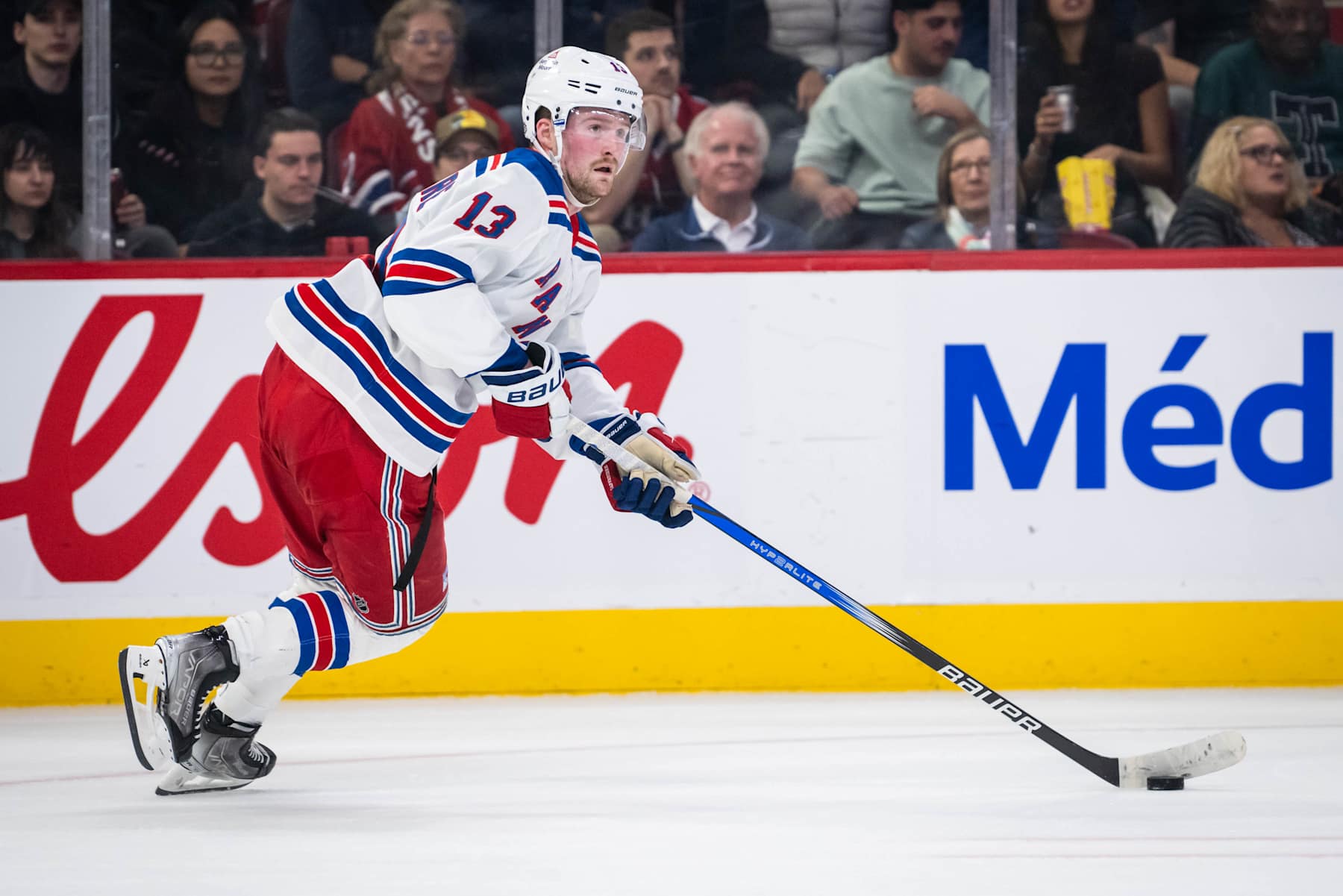
Alexis Lafrenière and the New York Rangers have agreed to a seven-year, $52.15 million extension, per USA Today's Vince Z. Mercogliano.
The reported deal will keep the No. 1 pick of the 2020 NHL draft in New York through his age-30 season in 2031-32.
Lafrenière was previously set to become a restricted free agent following the July expiration of his two-year bridge deal.
The 23-year-old winger recorded a career-high 28 goals and 57 points in 82 games for the Rangers last season.
Lafrenière then added eight goals and 14 points in 16 playoff games to help the Rangers reach the Eastern Conference Finals.
His contract is front-loaded with bonuses and includes an eight-team no-trade list for the final five years of the deal, according to PuckPedia.
At the time Lafrenière inked a two-year, $2.325 AAV extension with the Rangers last summer, he was playing third-line minutes on New York's "kid line" alongside Kaapo Kakko and Filip Chytil.
Two years later, the Rangers' usage of Lafrenière has skyrocketed. The former No. 1 pick started the 2024-25 season opposite Artemi Panarin on Vincent Trocheck's wing. Getting top-line minutes and playing a key role on the second power-play unit now has Lafrenière skating almost 18 minutes per night and producing at a point-per-game pace through seven contests.
Signing Lafrenière in the early stages of the 2024-25 campaign allows the Rangers to get ahead of the possibility that his contract value could climb even further. Should he record another career-best season, Lafrenière could have potentially commanded something closer to fellow 2020 draft pick Tim Stützle's eight-year, $8.35 million AAV deal with the Ottawa Senators.
The contract also gives the Rangers some clarity as to what their future salary cap will look like. Before the Lafrenière signing only Trocheck, Mika Zibanejad and Adam Fox were signed with the team past 2028.
The Rangers are still left with uncertainty regarding the future of star goaltender Igor Shesterkin, who reportedly turned down an eight-year, $88 million offer from the team this offseason and is set to become an unrestricted free agent in 2025.
Don't Blame Igor Shesterkin For Wanting More Than $88 Million From the Rangers
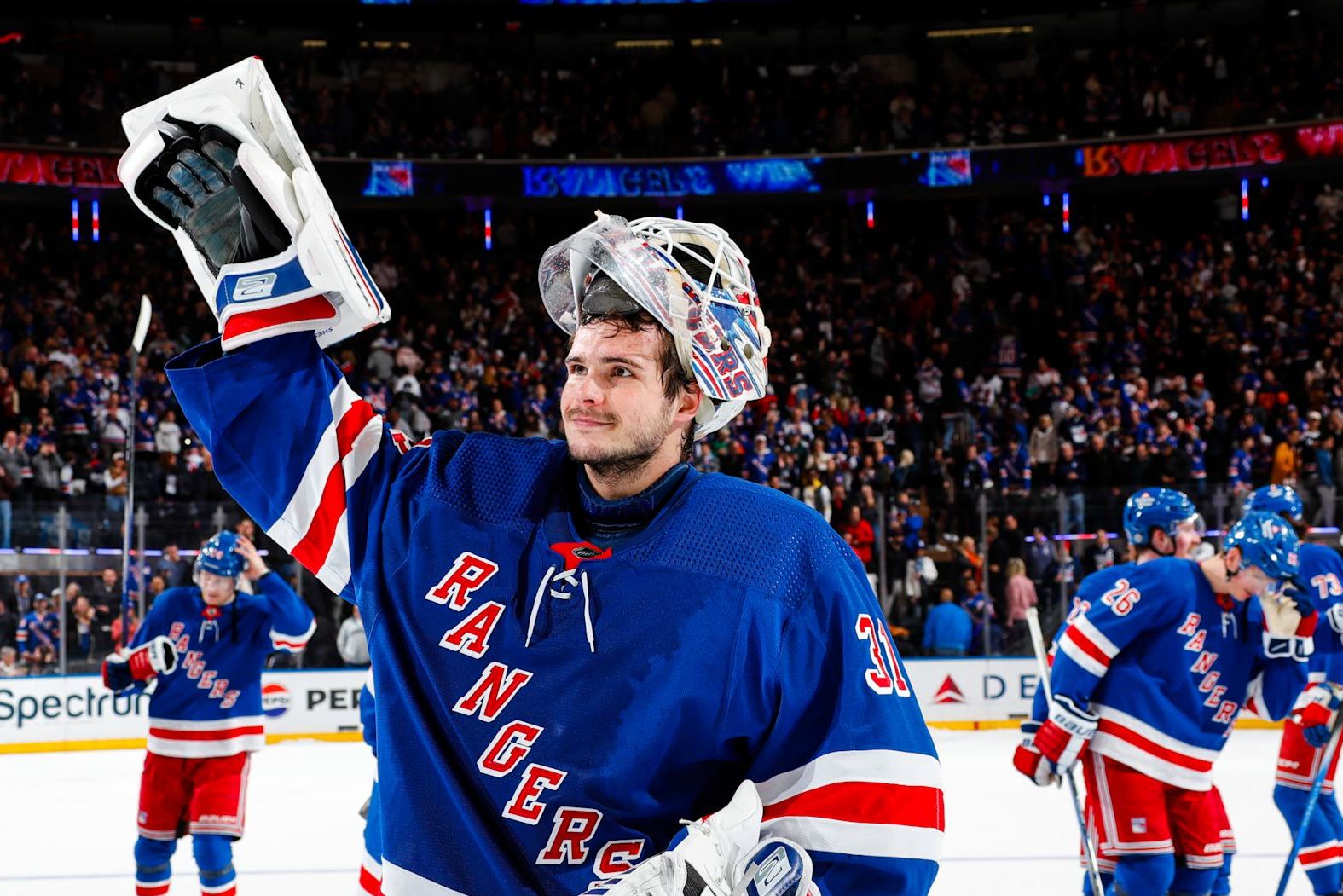
Igor Shesterkin is one of the best goaltenders in the NHL, amid what could be one of the best goaltending careers of all time.
As he officially entered his contract year with a 6-0 shutout Wednesday, one more thing was abundantly clear: Soon, he will become the highest-paid goaltender in NHL history.
The Rangers reportedly attempted to give him that title with an eight-year, $88 million offer before the season kicked off. The deal would have surpassed the eight-year, $84 million deal that former Montreal Canadiens goaltender Carey Price signed in 2017. Shesterkin decided to bet on himself even harder, turning the deal down and posting the aforementioned opening night shutout.
He's the latest of several recent NHL goalies fighting for better salaries as the salary cap continues to rise. Given that Shesterkin is the most important player on the Rangers most nights, why would we blame him for wanting a contract that reflects that via cap percentage?
The understanding that star players and their agents are seeking raises that reflect a bigger percentage of the team's cap now that the salary cap is rising in real time is paramount, here. Comparables from even a few years ago are going to be outdated as the league keeps growing financially, and the old arguments against paying goalies "too much" are equally outdated as the sport's analytics culture grows.
Leon Draisaitl's extension kicks in at $14 million per year next season, the richest AAV in league history until (at least) his teammate Connor McDavid's contract is up. Draisaitl and McDavid both eat in between 15-16 percent of the Oilers' cap apiece. We keep seeing new contract records because of the rising salary cap, and because of the shift to thinking about it as cap percentage per star player.
It seems that this mentality partly earned Jeremy Swayman his eight-year extension carrying an $8.25 million average annual value. It was a hard-fought, public, messy negotiation process, but it was a statement as we're wading through new positional markets in the new cap era.
Swayman had to fight to get $3 million fewer per year than Bruins' star winger David Pastrňák, and now it looks like Shesterkin's camp is seeking a similar proportion of the Rangers' cap to their star winger, Artemi Panarin, who rakes in $11.6 million per year.
This brings us to the mentality some teams harbor around paying goalies that this crop of stars is trying to change. One argument has been "Since they don't play every game they shouldn't be paid as such."
This has always been silly, considering no skater plays 60 minutes of a game, which goalies do. It's even sillier when you consider no two situations are alike -- like skaters, some goalies are better than others, and then some tandems impact usage.
Shesterkin has played at least 50 games per season for the past three seasons, owns a career regular-season .921 save percentage, and has been an extremely valuable part of the Rangers' perennial success as they started their winning era ahead of schedule when he arrived and they haven't looked back.
And, hello, are we forgetting he plays every must-win playoff game (if not every playoff game)? He owns a career .928 save percentage in the playoffs and sits at 15.62 playoff goals saved above expected according to Evolving Hockey. He has won playoff games for this team, bails them out of playoff losses, and somehow elevates his game when it matters the most.
We don't know exactly what Shesterkin's ask is, and he's said he wants to focus on hockey until the off-season, but his contract will set the tone for the goalie market in the era of the rising cap. He has a responsibility to his goalie peers to re-set their cap percentage and get the piece of the pie they've earned, and it looks like he's honoring that responsibility.
NHL Rumors: Igor Shesterkin Rejects Historic 8-Year, $88M Rangers Contract Offer
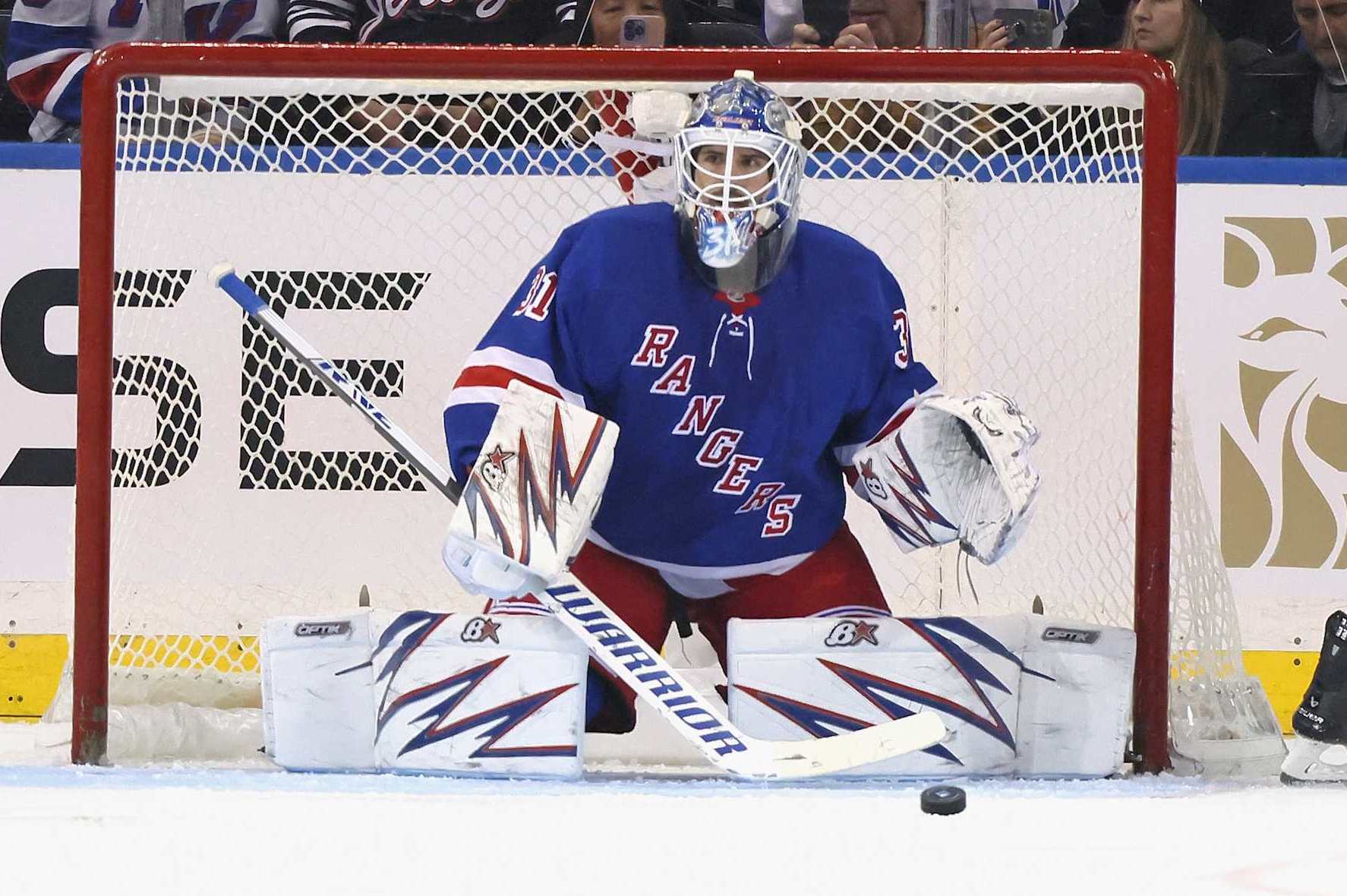
New York Rangers goaltender Igor Shesterkin declined an eight-year, $88 million contract offer from the team, according to ESPN's Kevin Weekes.
An $11 million average annual salary would've made him the highest-paid goalie ever, surpassing the Montreal Canadiens' Carey Price.
Shesterkin is entering the final year of his contract and will make $5.7 million for the 2024-25 season.
The 28-year-old signed his last extension in 2021, and it became clear within a matter of months he would be collecting a sizable pay raise when he was in line for a new contract. He was the Vezina Trophy winner for 2021-22 after leading the NHL in save percentage (.935) and goals-against average (2.07).
The Athletic's Pierre LeBrun reported on Sept. 24 that the Rangers indicated to Shesterkin's representatives they're willing to exceed Price's $10.5 million average salary. Mollie Walker of the New York Post previously reported in June the veteran netminder might be wanting as much as $12 million, though, which Weekes' newest reporting backs up.
Shesterkin's asking price has raised larger questions about the value of goalies and whether it's a wise investment to devote so much of the cap to the position. He has never started more than 58 games in a season, and he could soon have a salary that makes him a top-five earner in the NHL.
All things considered, the idea that goaltenders don't play a full 82-game schedule belies how long they're actually on the ice.
If the Rangers let Shesterkin hit the open market, another suitor could easily be willing to offer him $12 million or more as long as he puts together another strong season. He's arguably the best goaltender right now and Bleacher Report's Lyle Fitzsimmons ranked him ninth overall across all positions.
For a contending team such as New York, Shesterkin would leave a massive void between the pipes if he were to walk in the offseason.
NHL Rumors: Igor Shesterkin, Rangers Discuss Contract to Be Highest-Paid Goalie Ever
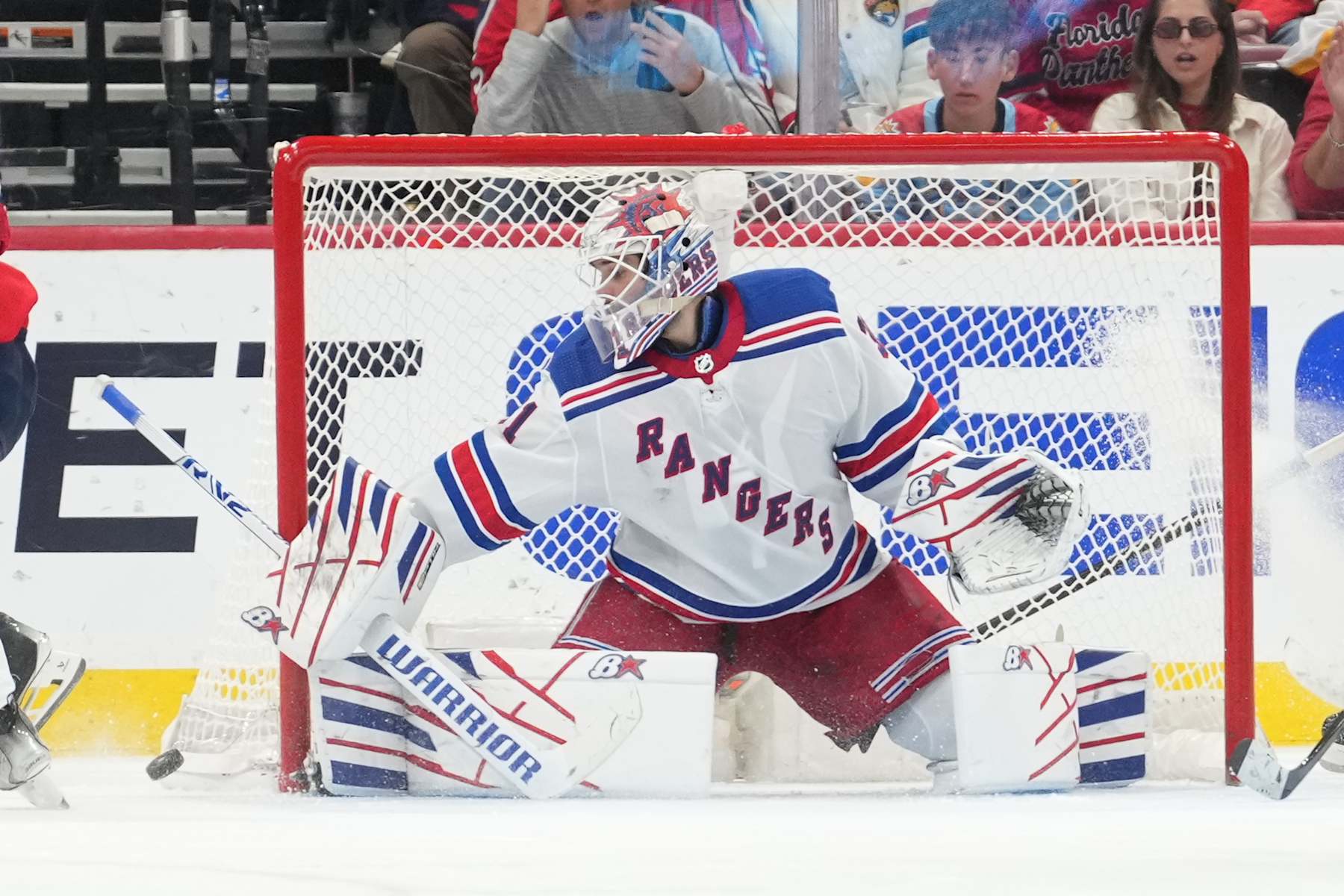
Igor Shesterkin is entering the final season of his current contract, but the New York Rangers are reportedly willing to make him the highest-paid goalie in NHL history to keep him in the Big Apple.
Pierre LeBrun of The Athletic reported Tuesday the Rangers "indicated to Shesterkin's camp" they are open to paying him more than $10.5 million per year, which was Carey Price's record-setting number for a goalie contract.
That would also be quite the increase over the $6.7 million in base salary he is set to make in 2024-25 after making $5 million in base salary last season.
The Rangers being interested in handing out a record-setting contract should come as no surprise.
After all, Shesterkin is 28 years old and theoretically will remain at his peak for the immediate future. This is also a team in the middle of a win-now window after reaching the Eastern Conference Final in two of the last three seasons.
Keeping the star goaltender in place while players such as Artemi Panarin lead the offensive efforts is the best way to potentially take the next step and reach the Stanley Cup Final and perhaps even lift the sport's coveted trophy.
It also helps Shesterkin's bargaining power that he is on the short list of the best goalies in the league.
He took home the 2021-22 Vezina Trophy as the NHL's top goalie with league-best marks in save percentage (93.5) and goals against average (2.07) and was also an All-Star in each of the last two seasons.
Shesterkin finished last season with a 36-17-2 record, .912 save percentage and a goals against average of 2.58. He was even better in the playoffs with a .926 save percentage and a goals against average of 2.34.
The one thing missing from his resume at this point is a Stanley Cup, and he could look to change that on a record-setting contract.
New York Rangers Have No Choice but to Pay Igor Shesterkin What He Wants
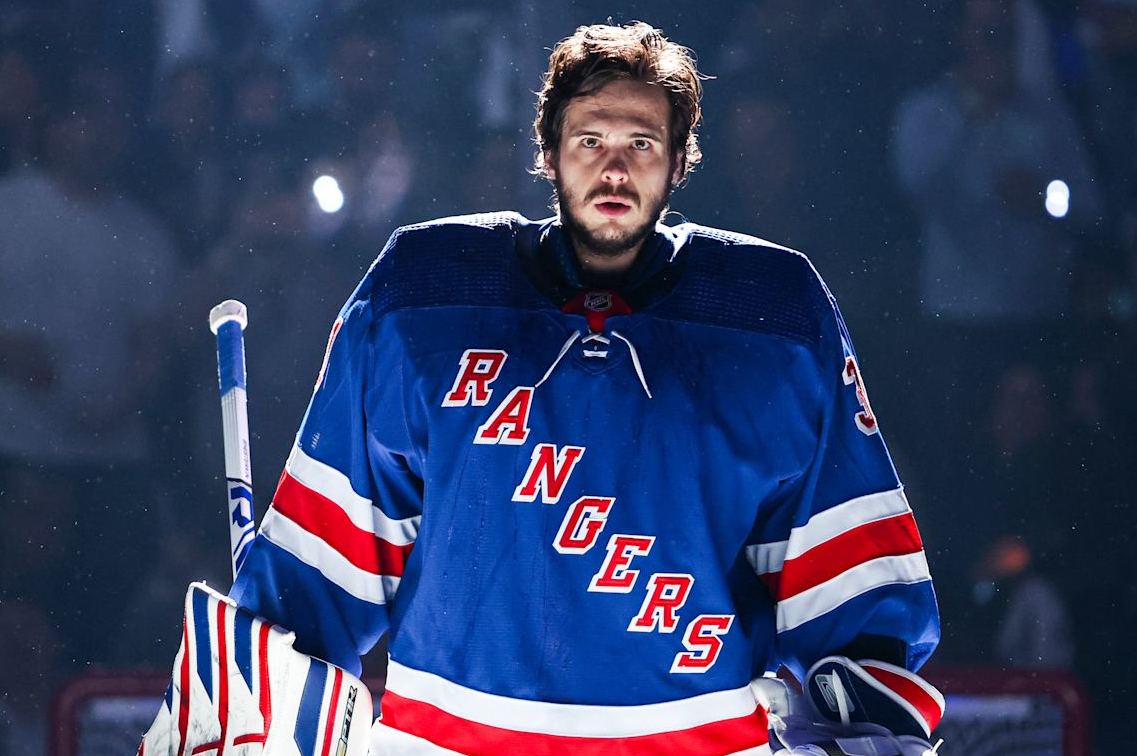
With Leon Draisaitl's long-term contract in Edmonton figured out, the fate of New York Rangers goaltender Igor Shesterkin remains the most consequential storyline for any pending unrestricted free agent.
The goaltender is in the final year of a contract with an incredibly team-friendly $5.67 million cap hit, according to Puckpedia.
The next deal will not be so favorable to the Rangers, though.
Shesterkin is playing it cool publicly and there is no reason to think he is looking to move on, but retaining him will require a significant pay jump.
Mollie Walker of the New York Post reported in June that the 28-year-old has floated a $12 million annual asking price. The final number is unlikely to be that high, but it should still make him the highest-paid goaltender in the NHL.
The Rangers, for their part, lack any real leverage. That's true because Shesterkin is the best goaltender in the NHL, and he would have no problem finding multiple teams willing to pay him what he wants.
However, the greater issue for New York is not just that the Russian is the best goaltender in the NHL. Many teams have won the Stanley Cup without Vezina-caliber or even good goaltending. In the case of the Blueshirts, though, their theory of success fundamentally depends on his existence.
The data revolution in hockey has revealed some reliable trends. Chief among them is that a team's long-term success is correlated to expected goals.
Last season, the Oilers and Panthers finished first and second in the league, respectively, per Evolving Hockey. The ideal Stanley Cup matchup rarely happens, but it's common sense that the teams that generate lots of scoring chances for themselves and allow few against are going to win more than they lose.
The New York Rangers won the Presidents' Trophy and made the Eastern Conference Final last year despite finishing 11th in expected goals and, more drastically, 23rd at five-on-five. Variance can account for a weird outcome in one game, a month or even a full season, but the Rangers have long proved to be an outlier, ranking fourth in the NHL by wins over the last three seasons despite constantly losing the expected goals battle.
There are other reasons for that success, such as elite special teams play and high-end finishing. By far the biggest is Shesterkin.
Over the past three seasons, he ranks second to Connor Hellebuyck in total goals saved above expected (82.4) and second to Frederik Andersen by save percentage above expected (minimum 1,000 shot attempts faced).
In the playoffs? Shesterkin is even better, lapping the competition by both metrics. It might be enough to say that the 2022 Vezina Trophy winner is the best goaltender in the NHL, but his fit in New York goes even further.
The Rangers do the bulk of their winning by rope-a-doping the competition; the other team will spend a lot of time in their end and try to break them down. Traditionally, this will eventually work. Goalies eventually crack under the barrage, but not Shesterkin.
Like his predecessor, Hall-of-Famer Henrik Lundqvist, his performance is unusually correlated to the amount of action he sees. Yes, Shesterkin can make highlight-reel saves, but he's at his best when dealing with quantity.

There's no better depiction of this phenomenon than the Rangers' last two playoff series against the Carolina Hurricanes.
The 'Canes are probably the best NHL team at generating offense through persistence and high-volume shooting, but Shesterkin left them exasperated both times. There's a comic-book trope about a villain who gets stronger the more hits he takes. That's the Rangers netminder.
Thus, it's not only that Shesterkin is elite, but he is also elite specifically in the way the Rangers' playing style demands. He erases the deficits of being outattempted by the opposition and buys the team enough time to capitalize on its own terms.
Comedian Jimmy Carr has a joke about how a fan once told him his girlfriend wouldn't be with him if he wasn't famous. "But I am famous," he replies.
Likewise, the Rangers would not be able to win in this manner without a goaltending savior. They do indeed have him, and that makes them an analytical anomaly.
Often, goaltenders are products of a good system. In New York, the goaltender—this specific goaltender—is this system. Shesterkin is surely aware of this, as is his agent, and he will expect to be paid accordingly.
New York general manager Chris Drury is at his franchise goaltender's mercy. Perhaps he could convince him to shave a few dollars out of loyalty and for the sake of roster-building. Beyond that, once the Russian sets his price, the Rangers' only true options will be to give him what he wants or cut ties.

Suppose one insists that $11 million-plus is too much to afford to a goaltender. Maybe the argument is that netminders are historically volatile and prone to injury-derailing performances once they hit their 30s.
If that's the Rangers' thinking and they choose to move on from Shesterkin, then fine. In such a case, it must be accompanied by a near-teardown of the team as it exists. A total rebuild would not be necessary as there are a some great young players on the roster already.
However, this group, as currently constructed, is going nowhere with anything less than superlative goaltending. Remove Shesterkin and the observable paths to a Stanley Cup evaporate.
Teams can win with lesser goaltending, but not this one. Not this roster that, for years and under three different head coaches, has sat in the bottom-third of the NHL by even-strength scoring chance ratios. A few million in cap savings will not change that.
The far likelier outcome is that New York bites the bullet and pays Shesterkin a number that invokes a lot of sticker shock but nonetheless proportionally reflects his value to the team.
If the Rangers want to keep their contention window open for the near future, it's the only choice they truly have.
